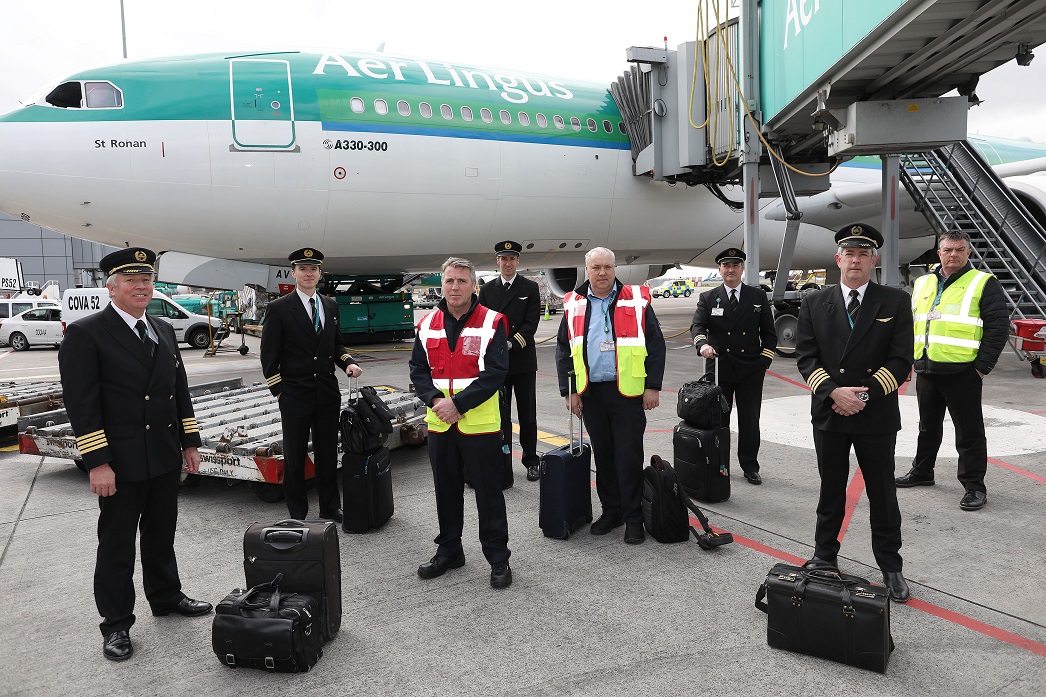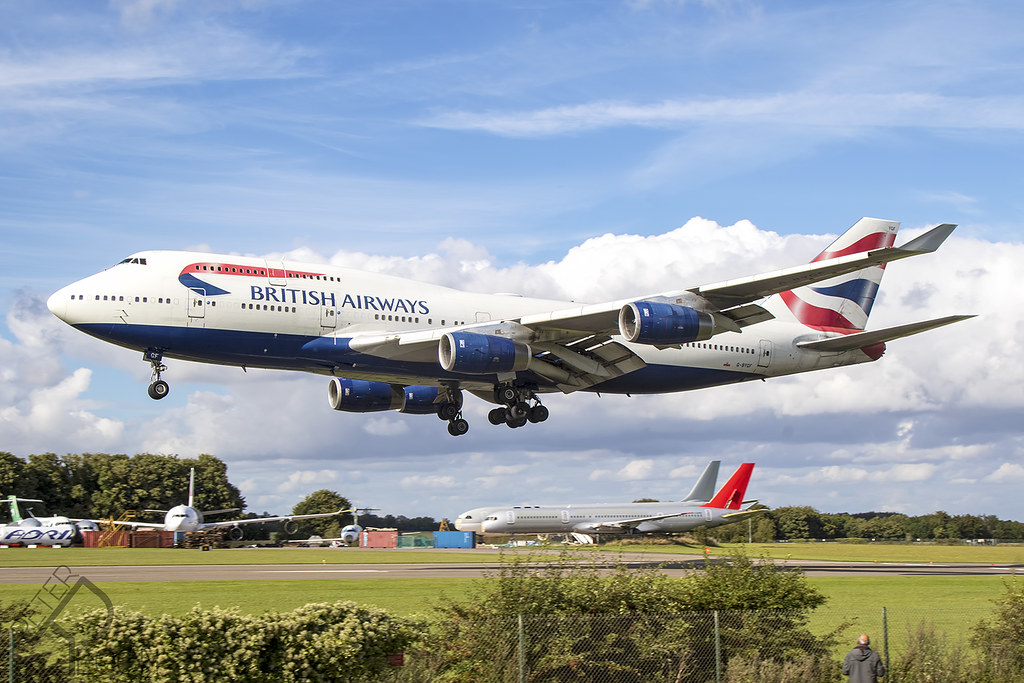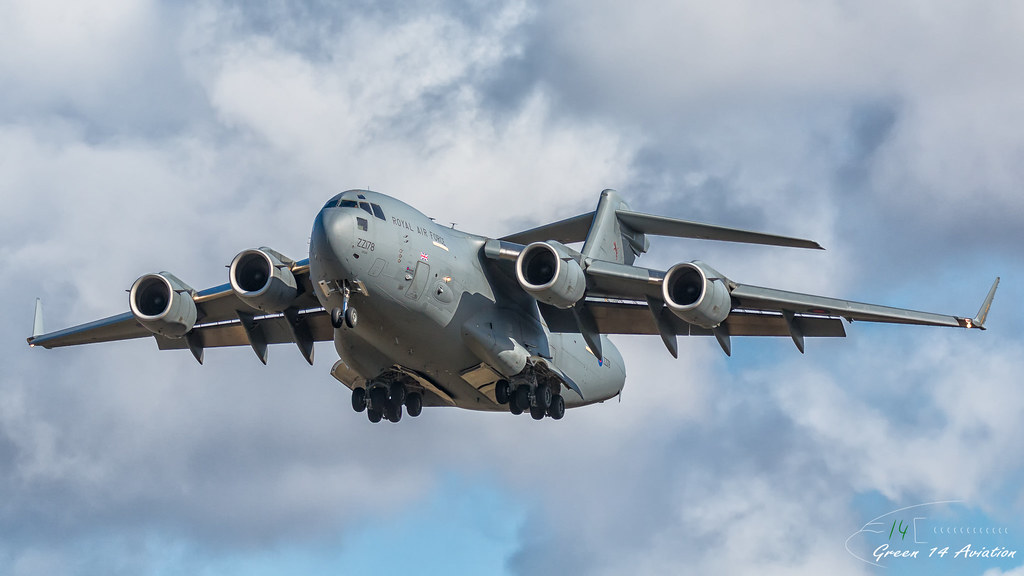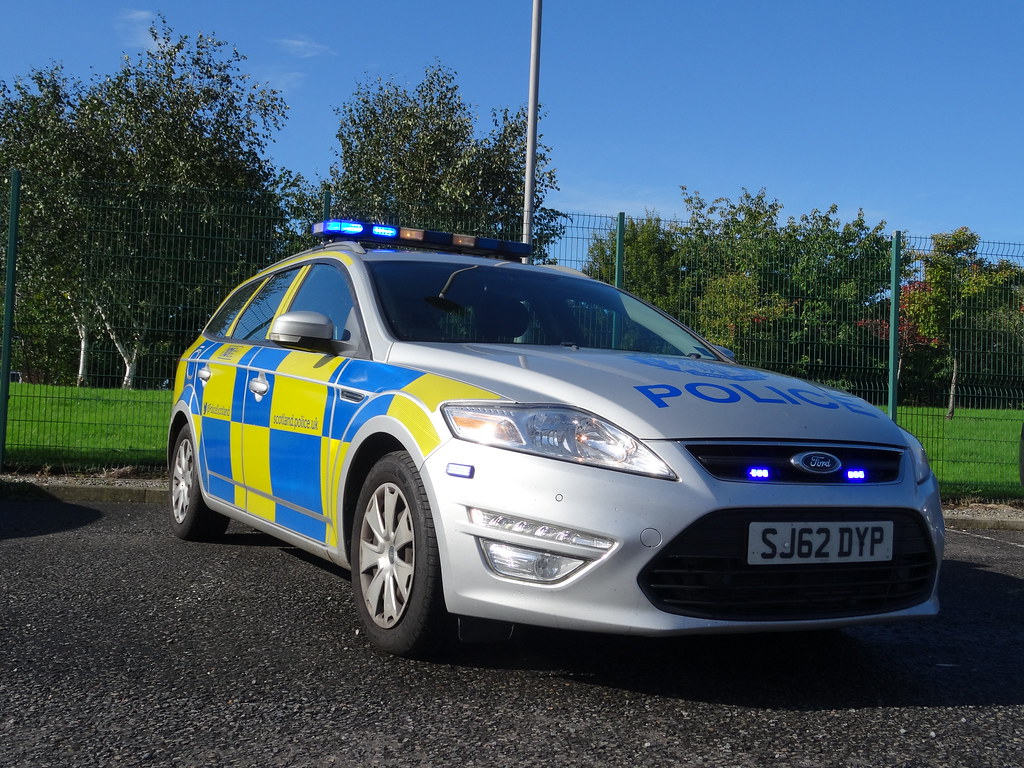Report by Julia Prior.
So, the Covid crisis may not be over but there are signs of recovery in aviation, albeit slowly in some countries. Let’s look back at what’s happened and the likely changes for the future.
With the immediate downturn in passenger demand, airlines were faced with bankruptcy. Government bailouts around the world ensuring that many carriers have survived. Not just legacy companies like Lufthansa, Thai, Emirates and Qantas but also operators such as Virgin Atlantic, Condor and Jet2.
Drastically reduced passenger numbers meant that larger aircraft were no longer viable. The demise of four engines gave British Airways (BA), Virgin Atlantic and Qantas the opportunity to retire their B747-400s earlier than planned. As usual, the Australian flag carrier honoured the iconic jet’s important contribution with a flypast over Sydney Harbour. Two from BA have been retained as visitor attractions/educational facilities to maintain its place in history. Although many others will be scrapped, there is a large market for second-hand parts and an increasing demand for recycled items. One company makes key fobs from an aircraft’s outer skin. Depending on type, these are often snapped up within minutes of going on sale. BA recently took the opportunity to sell off crockery, glassware and galley equipment which sold out very quickly.
Many airliners were put into storage at several locations around the world. The iconic A380 did not escape, with Air France immediately retiring its fleet. Other airlines have questioned its viability with Korean deciding to retire its A380s in the near future, together with those acquired from Asiana during their recent merger. Only BA, Qantas and Emirates have retained their faith in the type’s future operation. Thankfully Emirates is now returning it to service on an increasing number of routes. Only Hi-Fly, with the help of Lufthansa Technik, removed seats from both decks of the Superjumbo to convert it into a freighter. The project was short-lived as the Portuguese carrier decided not to extend the aircraft’s lease. In recognition of its iconic status, details of the final flight were posted on social media and route tracked on Flightradar24.

In the absence of passengers, many airlines decided to operate cargo only to help deliver Personal Protective Equipment (PPE) around the world. Aer Lingus undertook its first-ever flights to China for this purpose, using the A330. Over a period of 14 weeks, the airline operated 259 rotations between Dublin and Beijing. Each crew comprising five pilots, two engineers and a ground ops team member on the 28-hour round trip. The cabin was used as an additional cargo hold. Virgin Atlantic and BA also conducted similar flights.
For commercial spotters, times were hard. Some UK regional airports only operated one flight per day, others closed on certain days. The air taxi sector reported increased enquiries and business levels; at times resembling an airborne version of Uber! Some enthusiasts may have turned to other types to satisfy their need to at least log something.
Step in the RAF. The number of training flights at regional UK airports increased. After fielding several enquiries from curious observers in their gardens, the RAF took to social media, publicising when/where their C17 and A400M could be seen. There’s also been an increased presence of USAF Stratotankers and higher-level fighter activity from USAF F15s. Judging by the callsigns, someone has a vivid imagination. On one busy day Reaper, Pirate, Lager, Aggressor and Monica were all airborne!

During these challenging times, some changes to the future of aviation have been announced. Boom continues development of a cost-effective supersonic commercial aircraft, with United Airlines showing an interest. Will UK airlines snub this jet, in the same way US carriers behaved with Concorde?
There’s also increased interest in both hydrogen and electric power. United has also committed to the largest number of electric powered aircraft, provided the manufacturer meets the stringent production and safety criteria. Virgin Atlantic and Azul are also considering the alternative power sources, although these aircraft are currently only able to carry small passenger numbers. Not forgetting Airbus who are now reporting more confidence in achieving their goal of having a hydrogen powered aircraft in service by 2035.
Coming full circle, spotting has changed because of the pandemic and will evolve despite the pandemic. The remaining B747s are now operated predominantly by cargo airlines. Lufthansa retains its B747-8 fleet for the time being, but there are strong indications they will be retired or placed in storage. There seems to be a constant flow of new routes in the pipeline. Despite previously announcing no interest in transatlantic operations, JetBlue has arrived at both London Heathrow and Gatwick, with the possibility of operating from regional airports. Westjet recently announced seasonal services from Edinburgh and Glasgow to Toronto, starting May 2022. There are two start-ups keen to offer cheaper flights between the UK and India, Flypop and Hans Airlines. Rumours abound that Flybe will re-emerge, having obtained seven Heathrow slot pairs. A recruitment campaign is underway for pilots, cabin crew and training staff. It’s recently been reported that a lessor has up to 20 Dash 8 Q400 aircraft available. Very latest aviation media speculation names the airline’s new base as Birmingham, not Exeter.

In the leisure travel sector, Jet2 finally decided on Airbus for its fleet renewal. The large fleet of A321neos are due for delivery from 2023, most likely replacing its ageing B757s and B737-300s. The airline may increase the number to 60. TUI has announced a major reorganisation programme, consolidating departments across the company in the same way as Thomas Cook, and recently retired its last B757-200. The majority will be converted to freighters for DHL. Condor’s sortie into the UK market, competing on Manchester to Palma de Mallorca, is now postponed.
Whilst what to spot is purely a personal choice, many of us opt for commercial airliners only. Others will include gliders, balloons, microlights; anything that carries a registration. So, how do you feel about drones that use a runway like the one currently operated by the UK Border Force from Lydd? Would AirCar stir your interest enough to add to your log?
Finally, a cautionary tale for all enthusiasts, particularly at UK regional airports. Recently, a spotter at Birmingham (BHX) was threatened with arrest for photographing aircraft bringing in Afghan evacuees. Taking to social media, the spotter wanted to make a formal complaint about the officer’s poor attitude. It had been suggested he was a journalist disguised as a spotter. Would a journalist post 20 years of aircraft photos on social media just to get a “scoop”? After a lengthy discussion with the Ops Supervisor – West Midlands Aviation Police Unit, he was advised that the area he used to take pictures was officially out of bounds. Despite being one of the long-stay carparks, the Covid testing area is located there. Poor communication by the airport meant that spaces were still being advertised on the website. On the day in question, many evacuation flights had arrived in a short space of time and processing was slow. This resulted in backlogs soon forming, with some passengers being kept on an aircraft for over eight hours. In the Ops Supervisor’s words “they were in danger of being overwhelmed”. Suspicious activity had also been noted on this carpark, so officers were dispatched to investigate. Whilst not excusing the rude behaviour, the police on duty were briefed to instruct not debate. Apparently, the spotter was trespassing on airport land just yards from the official viewing area. The relevant byelaw, which may operate at other UK airports, states that failure to produce identity documents can result in arrest and prosecution, with a fine of up to £2,000. It appears that whilst the land is private property, “BHX tolerates spotters”!
The good news is that a new liaison officer has recently been appointed, but instigating a spotters’ identity scheme is well down the list of his priorities.
Further investigation revealed websites for plane spotters schemes at Stansted, Bristol, Gatwick, Manchester and Edinburgh. The Scottish one is currently not operational, and the status of the others remains unclear. The value of these groups is to help the Police by reporting suspicious activity around the airport perimeter. Apart from Manchester, most UK airports are failing to acknowledge what enthusiasts can do to support them. In contrast, many UK airbases recognise the importance of spotters. It was recently reported that one had saved a USAF pilot’s life. On take-off, flames were seen coming from the engine for longer than the usual afterburner. The experienced spotter knew something was wrong. His quick thinking, in phoning the base, ensured the pilot was alerted to the serious fault with his aircraft. The Base Commander also acknowledged his support and their positive engagement with the local community.
Whilst realising that the audience on this site is predominantly commercial airliner spotters, it’s maybe time to recognise the effect the pandemic has had on our hobby and what the future holds. Possibly, just possibly, we could educate and enlighten UK airports in understanding how useful we can be to their day-to-day operations.








4 comments
Its true that spotting and spotters are somewhat an enigma in the minds of security forces as well as the general public in its perception of these “odd” people standing in fields, sides of roads or other obscure locations waiting for and photographing aircraft. But for many of us, it goes with the territory.
After all, those same public observers might be intrigued at what we love doing in all weathers etc. but that’s about it!
We have endured a tough time these past 2 years, unless of course we have had the luxury of living with visual range of primary airports such as LHR , LGW or MAN.
For those “local” spotters, the variety of airlines that have passed through have been outstanding, which prior to Covid would have required trips overseas, sometimes long-haul at that!
The outlook into the next 2 years or so will be very different simply because as our author of this piece noted, types have been withdrawn, routes streamlined and frequencies reduced.
If we just consider that on a world scale, many nations are nowhere near the vaccination coverage of the UK
And while in this country, we may be able to travel to certain locations we are not anywhere near the level of international travel we had before and may not get back that way to the same degree if airlines deem certain routes no longer viable or it will be less of an attraction for us.
And when we look at airline deliveries, true they are beginning to flourish now, but very often its the internal, short haul types that are delivered . Some of course such as JBU, KZR or TSC using A321Neos will utilise them for longer thin routings. IMHO spotting has evolved and unless “number – crunching ” is your thing, where we would we descend on USA, China or Middle East and get a large cache of aircraft, the golden days we had at LHR and LGW will be somewhat less frenetic in the foreseeable. I think particularly LGW its a sad situation. They have always been the poor relation to LHR – Wrongly so! Yet very often LGW gave us those obscure airlines or types that LHR had no interest in. We are seeing its gradual demise as key supporters / airlines go elsewhere and while it will still have a measure of value to the travel industry and to us as spotters, we are seeing it in a decline.
I know a number of enthusiasts personally would travel to both LHR and LGW in the same visit or day because they would glean a good selection from both, yet now LGW is not always on their “must get to” list.
Of course local spotters in these vicinities will contradict my analysis, but I’m coming from the aspect of spotters who travel from throughout the UK to visit S.E. airports and they are the ones that think more carefully about what is the best reward for a days spotting.
I have travelled to LHR during this sublime time to get specific airlines or even special colour schemes more than just visiting as a random day out, and while using FR24 has made visits a little more predictable we are still seeing airlines changing equipment on a whim even on the day of departure. While that in itself can be exciting and sometimes proven to be a better result, its clear even FR24 with its access to huge amounts of data and sourced information cannot supply to us a fixed structured listing because the very airlines themselves don’t maintain consistency where they have mixed fleets. to call upon and passenger numbers are so erratic it makes sense to use the most economic on the day. Now with the demise of many airlines and types being withdrawn from service, spotting is a very different past time. I’m just very pleased that almost 50 years of spotting means I have had the joy of seeing many of the classics in reality that now are confined to the aviation history books.
Finally as to police intervention towards us, its always been a challenge between what we genuinely strive to do which is simply to watch planes and the perceived security risk they feel we pose. Its not a new issue and unlike other countries and airports that have seen the wisdom of embracing us (and often the financial contribution that can be had through viewing facilities), the UK doesn’t see us in that same light. Its ironic really, as plane spotters here in Britain, we have been around for so many years and have made an indelible mark with many. Why do I say that? Consider the publications produced here such as “Airliner World”, C.A.M. Air Britain’s vast array of publications and numerous others. That in itself convinces me we are of some significance.
That many airline personnel don’t just view their role as a job but love aviation in its many forms, often especially now producing videos, you tube items about our interest. But outside of that area we are seen as an irritant or yet another problem to contend with.
True some police officers and forces are sympathetic to our interest and equally we appreciate their presence is vital on so many levels. Its just that harmony and co-existence is not quite there yet. And I guess in todays world seems more elusive than ever before.
Holiday inn express hotel car park at Luton is now re opened ,the hotel itself will be re opened from the 22nd-24 th October .
I read the comments on this item with particular interest, as Birmingham (BHX) is my local airport. In the past, BHX has provided viewing areas for both spotters and visitors alike, and to this day, I struggle to understand why the airport continues to feel the need to ignore the many spotters that visit on a frequent basis. BHX does indeed get some pretty decent visitors from time to time, which when posted ahead of arrival on various social media platforms, get many more spotters to head out to the airport with cameras and notepads in hand.
If there are any people on here reading this that own and/or manage UK airports, please be aware – SPOTTERS ARE NOT A SECURITY RISK. Well, not the genuine spotters anyway. We all know about the risks of FOD, airport perimeter fencing remaining secure, and not to block crash gates with our cars, and by and large if any of us see people who contravene these measures, we WILL advise them of their wrong doing.
As time goes on I really do believe in the thought that all UK airports should recognise spotters for who they are and what we can bring to the party. We spend money in cafe’s etc, keep a look out for suspicious people, and can advise the Police accordingly if any of us see something which isn’t right. Surely once the pandemic is over and done with, airports could at least flirt with the idea that a spotters area either inside or out (ideally both), can be implemented and made into a kind of extension to the airport shops which we see in all airports,,, and thus they can generate good revenue if the right products and services are located within.
So how about it airport operators, can we see the introduction of viewing areas please? If nothing else, airports will know where the spotters are and can keep an eye on us themselves! Thanks for listening.
Oh and by the way, check out the viewing areas at Amsterdam, Frankfurt, and the recently added one at Brussels.